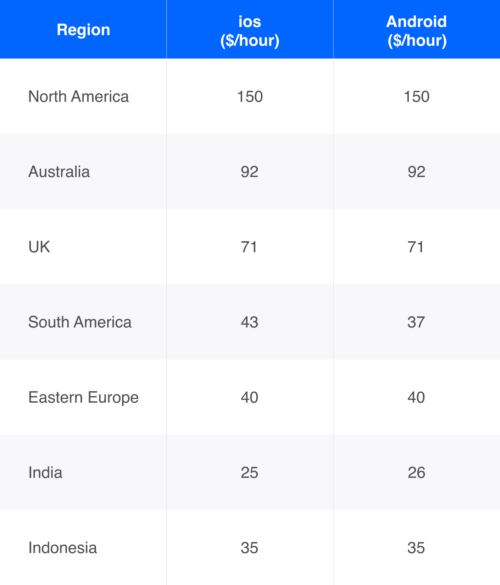It doesn’t matter whether you’re just getting started with low-code or scaling low-code across your organisation. Adopting a few agile best practices can transform long timelines and just-OK applications into rapid development that delivers outstanding results. As you find the right people, you should also foster a culture of asking open-ended questions.
Here are some of the pitfalls and how can you avoid them while using Low Code Development Platforms. Why not try and pull something off the shelf that is easy and fun to use? Life Sciences Overview Improve operational efficiency and time to market.
How can Agile methodology be incorporated into a low-code project?
There is a seemingly unending number of new no-code tools coming out every month, catering to people’s specific wishes and particular niches. Many mobile apps are hard-coded, but even when low code is used, many so-called “low- code” platforms suffer from common pitfalls. For one, they low-code App development may lack the ease of use that allows non-technical users to develop powerful apps quickly and easily, defeating much of the purpose of using low code at all. For example, branding an app with “low code” may require outsourcing work to a third-party, adding more time and review cycles.

Environment, it’s crucial to embrace this iterative approach to ensure the highest quality and best performance for your application. Watch this webinar to see how Pega makes it easy to develop mobile enterprise apps. Quickbase, and deploy those applications across departments using best practices to mitigate risk. Forrester study projected that the low-code application market would grow from $1.7 billion in 2015 to $15 billion by the end of 2020. It is because everything goes without worrying about time or complexity when compared to the conventional approach.
ENTERPRISE SOLUTIONS
The great benefit of low-code app development is that the chosen platform takes care of so much of the work for you. That’s a good thing, except when you find that it might be too much of a good thing. Perhaps the most immediate and recognizable benefit of low code is improved development speed and agility. It takes a lot of time to compose individual lines of code, as well as correct syntax and command formation. Indeed, companies should exercise caution when selecting a low-code tool as their development platform.

This disconnect leads to endless rounds of revision cycles and an end-product that rarely looks as it was envisioned by the business user. To best understand the lack of functional, business-focused mobile applications, let’s unpack the traditional approach to building, deploying, and maintaining mobile apps. When choosing a platform, consider the vendor’s reliability and the security features it provides. As long as citizen-developed applications are built on a platform with state-of-the-art security, data breaches are no more likely than with other corporate systems. Citizen developers might not be aware of a company’s data security and governance requirements.
Four Pitfalls of Low-Code Application Development
The process again begins when a user identifies the need for a mobile app. But in this case, the intuitive, visual interface of a low-code platform enables business users to build the app themselves. All it takes is a few clicks to deploy a desktop app to iOS and Android devices, reusing all the original logic. The need for disjointed review cycles and back-and- forth with developers is virtually eliminated.

Some vendors cater specifically to non-programmers, while others are suitable for professional programmers that seek to accelerate their everyday workloads. A common problem with third-party integration is that developers don’t have control over third-party services. A third party may change the API or security policy at any time, which is their prerogative to protect security and reputation. When they do, it’s your responsibility to update the app as soon as possible.
Flexibility and Customization Lack
They can’t afford to bring in developers with modern skills when they’re stuck supporting outdated systems and applications. Technology for designing and developing application elements, including data models, business processes, and UI components. This accelerates the development process while reducing the chances of errors in the application code. The process begins when a requestor, often a business user, identifies a need for a mobile app through their day-to-day work. They are then challenged with explaining the app requirements and expected end-user experience to a developer without much knowledge of how they build the app. In turn, the developer is challenged with translating this description into a usable app experience without real insight into how the app will be used.

First, software capabilities have improved dramatically since the days of code generators like RAD and 4GL tools. Modern low-code software offers the capabilities to truly meet enterprise demands. Before deployment, perform a final review to confirm that all requirements have been met, all issues have https://www.globalcloudteam.com/ been resolved, and the application has passed the necessary testing phases. Address any loose ends, such as updating documentation or finalizing access controls and permissions. Join us at PegaWorld iNspire and hear how the world’s biggest brands are simplifying application development with low code.
Pros and cons of low-code development platforms
Trying to force things to work by simply substituting .NET or Java with low-code platforms in your workflow is going to be a disaster. This is incredibly advantageous when developing an app because developers know exactly what the end user will experience, so there are no surprises. But if your application isn’t used or if users are unhappy, it will never deliver value. If you’re ready to jump into low-code development, you’ll want to know what these platforms can help you accomplish and how to sidestep common troubles. Although low-code platforms have considerable benefits, they also carry potential issues to consider before adoption. A common concern is that you cannot get readable or usable code out of a low-code platform, making it very hard to move your app to a different platform.
- This will require business leaders to be engaged in making the right vendor and talent management decisions, as well as taking the proper risk mitigation measures.
- Test for known vulnerabilities to identify possible security flaws in the codebase, though the underlying risks could still be too serious for some organizations and compliance officers to ignore.
- Whereas the best low-code teams are built to move quickly and minimise dependencies.
- Forrester study projected that the low-code application market would grow from $1.7 billion in 2015 to $15 billion by the end of 2020.
- This is the risk that the app has a faulty design, which citizen developers may lack the knowledge and experience to recognize.
This enables true, real-time agility, allowing companies to remain secure and compliant and user experiences to stay consistent and unbroken. But, it is extremely important to look for features that ease the external integration of data and services. Look for out-of-the-box integrations and verify whether custom integrations can be built and reused across apps while choosing low-code platforms. In addition, choosing a platform that supports open source technologies allows an open and extensible approach to application delivery.
thoughts on “Pros and cons of low-code development platforms”
It is risky if the organization is dependent on knowledge possessed by only one individual. According to companies like Toptal and Codepen, many developers can test the performance of the apps using real devices with large data volumes to make sure that everything is just as expected. Developers who find errors in the components they employ across many apps can address the problem once in a custom component, and the fix will carry across to all their apps. If the platform owners miss a change in a third-party service, they’ll be notified by all low-code developers that there is a problem. They can then make changes to the middleware that will be automatically applied to all products using that third-party service. There’s no need to deal with the tedium of updating each app individually.